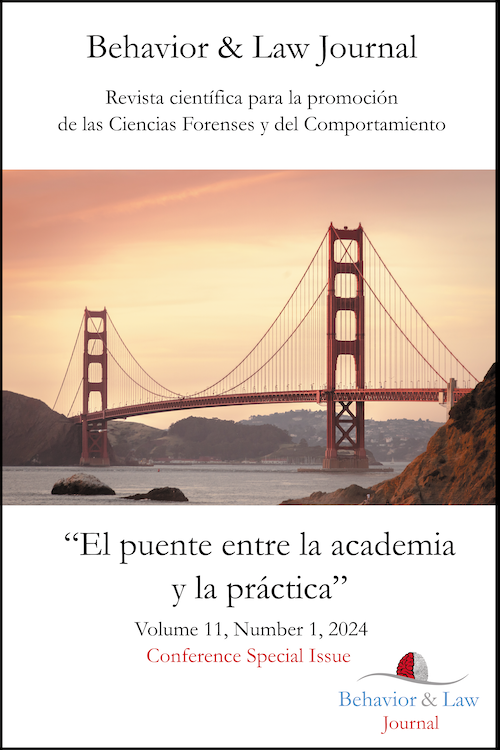Abstract
The study on Sharenting and its impact on the rights of minors was conducted using a qualitative methodology in a documentary, bibliographical, and descriptive research. An analytical-synthetic method was employed to explore the reality of the Sharenting problem, focusing on the exposure of minors' private lives in digital environments. This analysis considered national and international regulations, comparative law, and relevant international treaties on the rights of children and adolescents. Laws such as the Micaela Law in Argentina, the Law to Prevent and Eradicate Violence against Women in Ecuador, and the UN Convention on the Rights of the Child, among other legal frameworks, were examined. The qualitative approach allowed for a deeper understanding of the implications of Sharenting on the privacy, image, and personal development of minors, identifying possible violations of their fundamental rights, related to intimacy, image, and honor. The importance of addressing this phenomenon from a legal and regulatory perspective was highlighted to understand the responsibilities of parents and protect the rights of children and adolescents online, based on the principle of the best interests of the child. The analytical-synthetic method facilitated the synthesis of key information, allowing for the identification of challenges in the implementation of legislation, the need for parental co-responsibility, the call for a change in mentality, and the promotion of education and prevention as essential pillars to protect minors in the digital environment. The review of the study concluded that there is a continuous vulnerability of the Rights of Minors, and Sharenting can compromise the privacy, image, and personal development of children and adolescents, exposing them to risks such as identity theft, cyberbullying, and sexual exploitation. Furthermore, there are additional difficulties due to the lack of awareness and education about the risks of Sharenting in the co-responsibility of parents.
References
Acedo Penco, A. y Platero Alcón, A. (2016). La privacidad de los niños y adolescentes en las redes sociales: Referencia especial al régimen normativo europeo y español, con algunas consideraciones sobre el chileno. Revista chilena de derecho y tecnología, 5(2), 63-94. https://dx.doi.org/10.5354/0719-2584.2016.42557 oficial – Suplemento de 21 de diciembre de 2015.
Azurmendi, A., Etayo, C., & Torrell, A. (2021). Sharenting y derechos digitales de los niños y adolescentes. Profesional de la información, 30(4), 1-10. https://doi.org/https://doi.org/10.3145/epi.2021.jul.07
Código Orgánico de la Niñez y la Adolescencia [CNA]. Ley 100. Registro Oficial 737 de 03 de enero 2003. Última modificación: 31 de mayo 2017. (Ecuador)
Código Orgánico Integral Penal [COIP]. Ley 0. Registro Oficial Suplemento 180 de 10 de febrero de 2014. Última modificación: 17 de febrero de 2021. (Ecuador)
Constitución de la República del Ecuador [Const.]. (2008). Constitución de la República del Ecuador. Registro Oficial 449 del 20 de octubre de 2008.
García García, A. (2021). Revista de Derecho de la UNED (RDUNED). La protección digital del menor: El fenómeno del sharenting a examen, 27, 455-492. https://doi.org/https://doi.org/10.5944/rduned.27.2021.31094
Hinojo-Lucena, F., Aznar-Díaz, I., Cáceres-Reche, M., Trujillo-Torres, J., & Romero-Rodríguez, J. (2020). Sharenting: Internet addiction, self-control and online photos of underage children. [Sharenting: Adicción a Internet, autocontrol y fotografías online de menores]. Comunicar, 64, 97-108. https://doi.org/10.3916/C64-2020-09
Ley N° 27590. Ley Micaela. Programa Nacional de Prevención y Concientización del Grooming o Ciberacoso contra Niñas, Niños y Adolescentes. abril de 2020. (Argentina)
Ley Integral para Prevenir y Erradicar la Violencia contra las Mujeres, Ley orgánica. Registro Oficial Suplemento 175 de 5 de febrero de 2018. (Ecuador)
Ley de Protección de Datos Personales, Ley orgánica. Registro Oficial Suplemento 459 de 26 de mayo de 2021. (Ecuador)
Memorándum de Montevideo (2009). Protección de datos personales y la vida privada en las redes sociales en Internet, en particular de niños, niñas y adolescentes. http://tinyurl.com/bdjwas22
Ordóñez Pineda, L. y Calva Jiménez, S. (2020). Amenazas a la privacidad de los menores de edad a partir del Sharenting. Revista chilena de derecho y tecnología, 9(2), 105-130. https://dx.doi.org/10.5354/0719-2584.2020.55333
Organización de las Naciones Unidas [ONU]. (1989, 20 de noviembre). Convención sobre los Derechos del Niño. https://www.unicef.org/child-rights-convention/convention-text-childrens-version.
Salame Ortiz, M. A. (2018). Aplicación del principio de corresponsabilidad parental y el ejercicio conjunto de la patria potestad en los niños, niñas y adolescentes [Tesis de pregrado, Universidad Uniandes]. Repositorio institucional Uniandes. https://dspace.uniandes.edu.ec/handle/123456789/8511
Peña Vera, T. (2022). Etapas del análisis de la información documental. Revista Interamericana de Bibliotecología, 45(3), 1-7. https://doi.org/https://doi.org/10.17533/udea.rib.v45n3e340545

This work is licensed under a Creative Commons Attribution-NonCommercial-NoDerivatives 4.0 International License.
Copyright (c) 2025 Behavior & Law Journal

